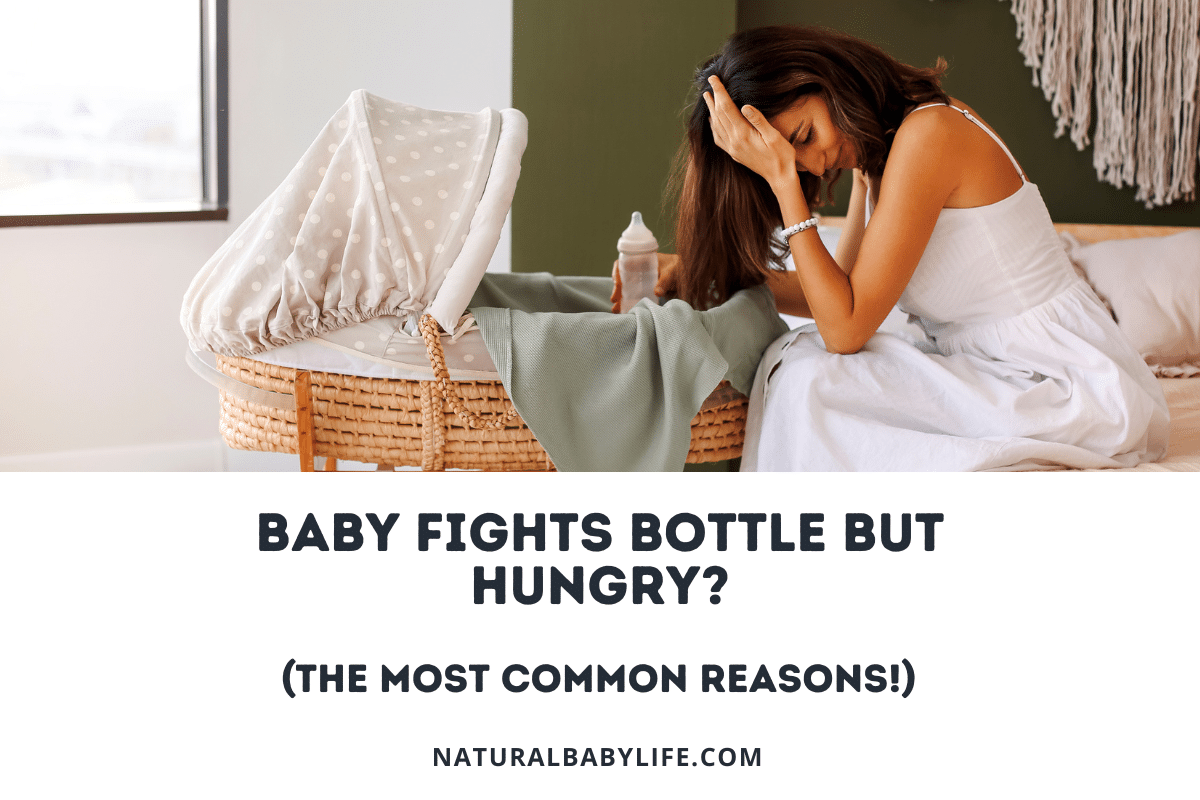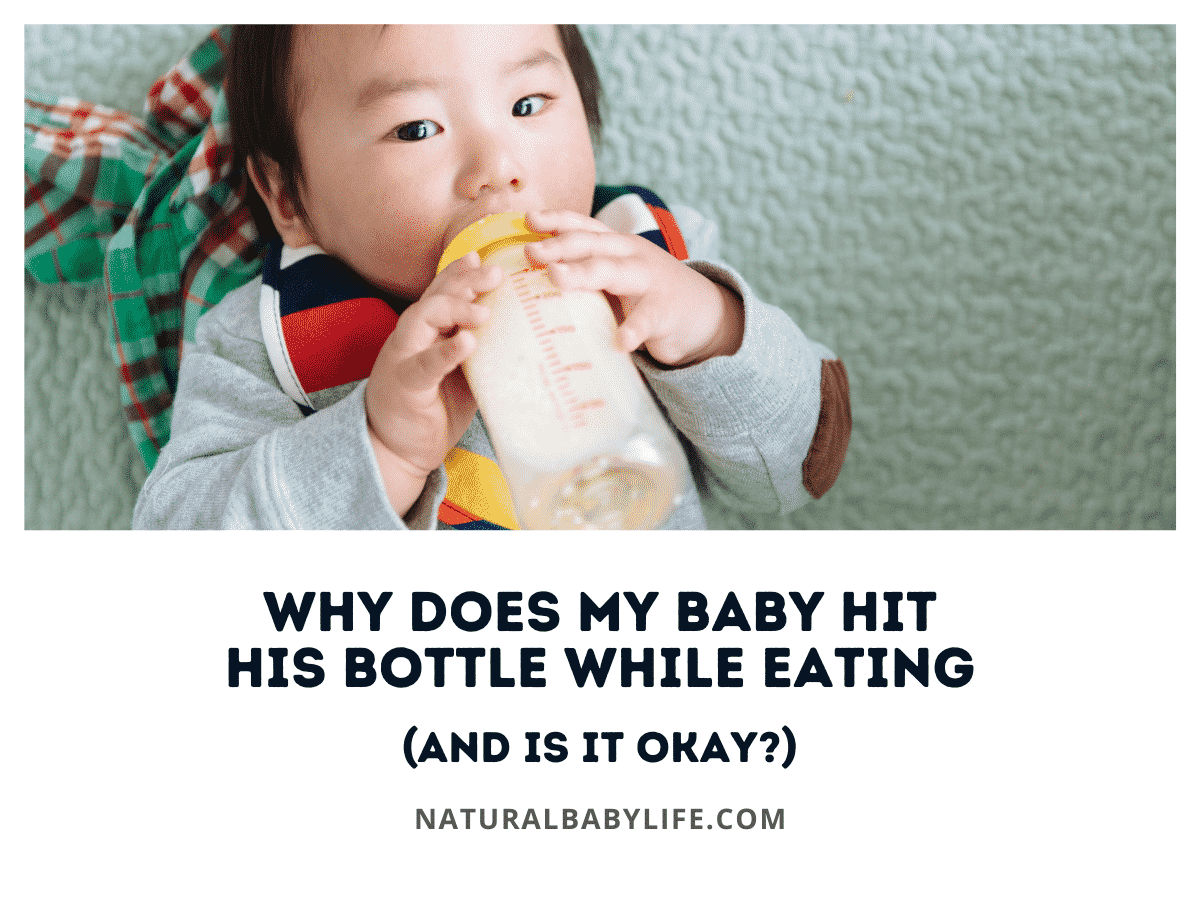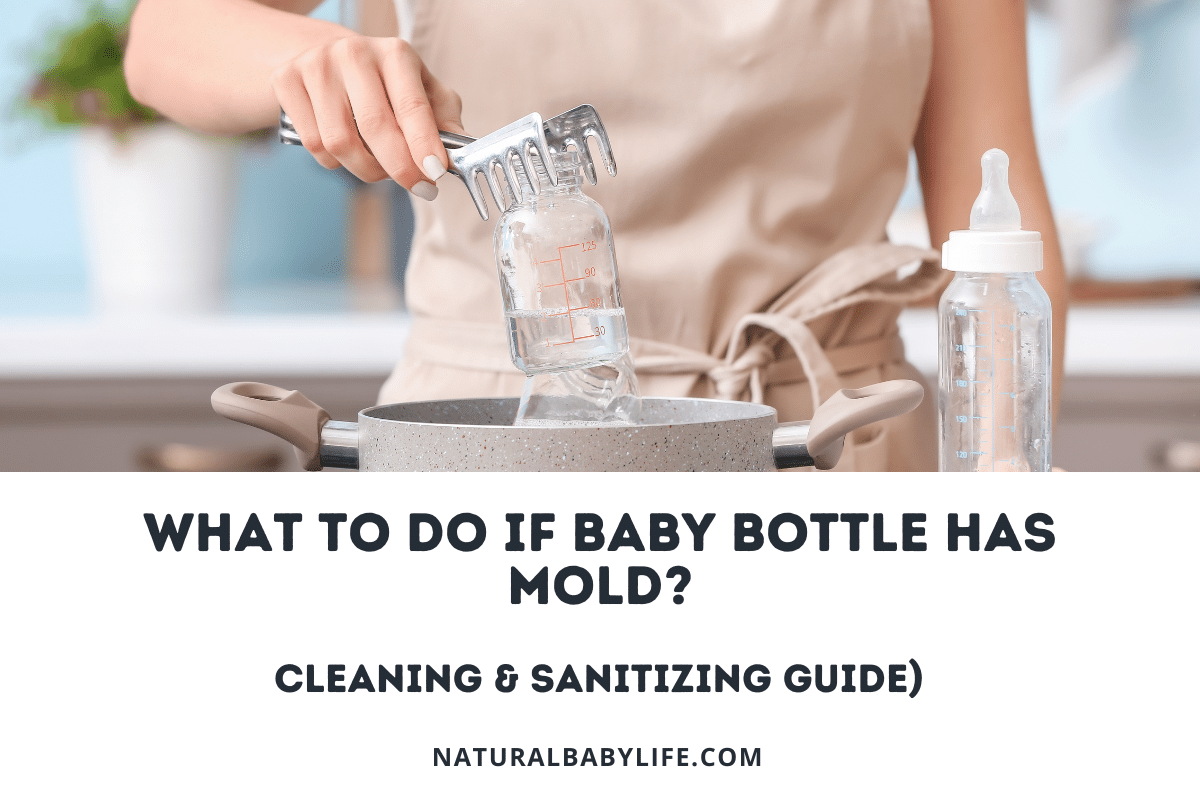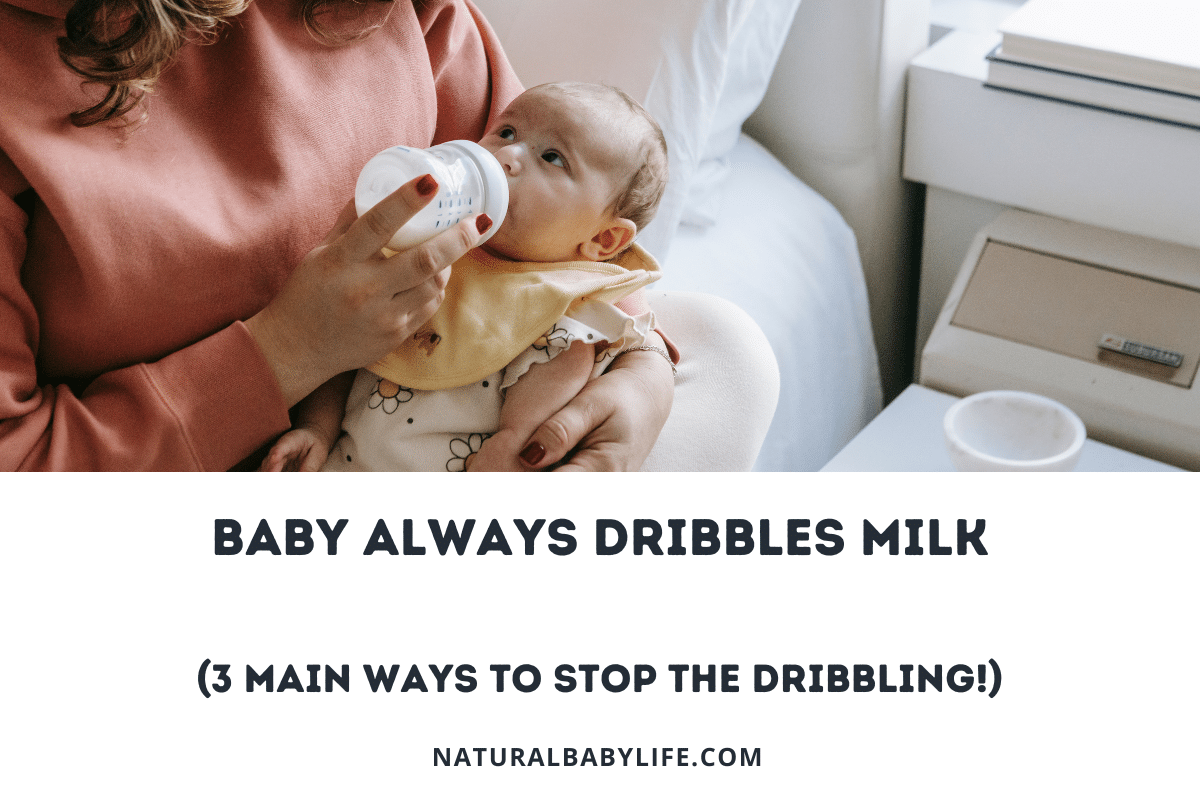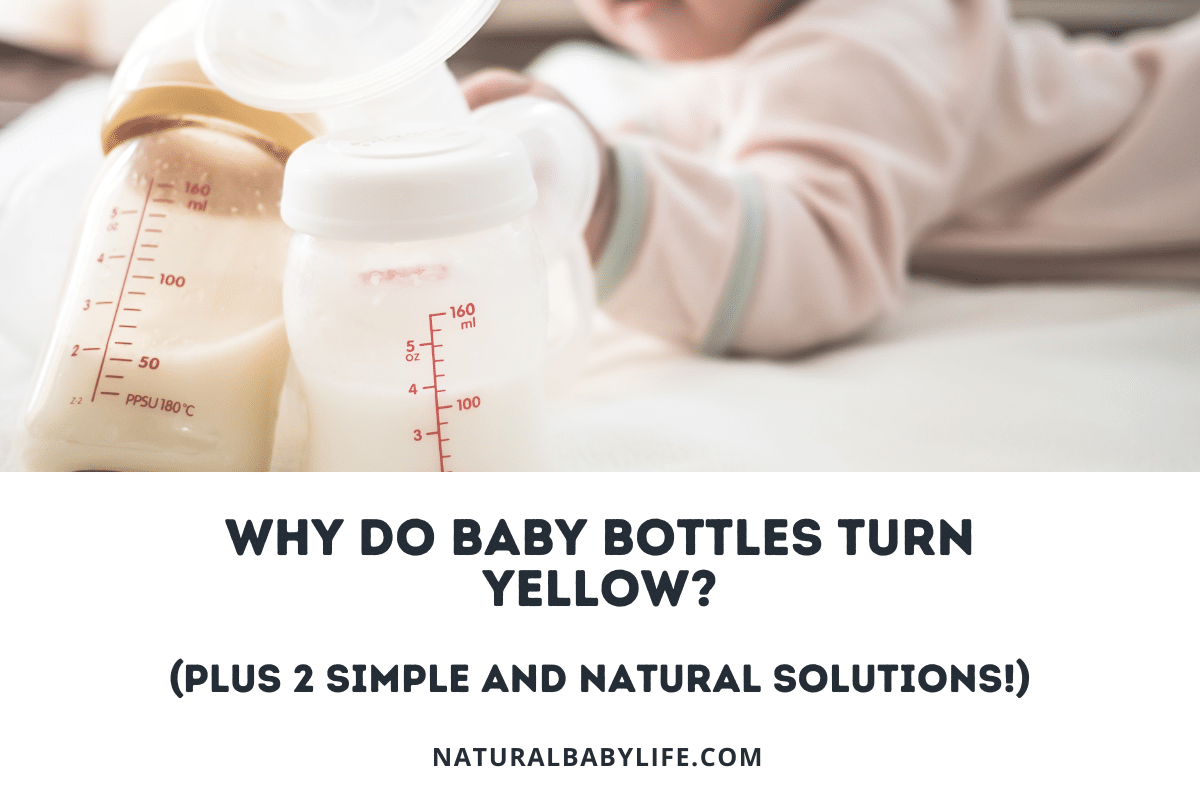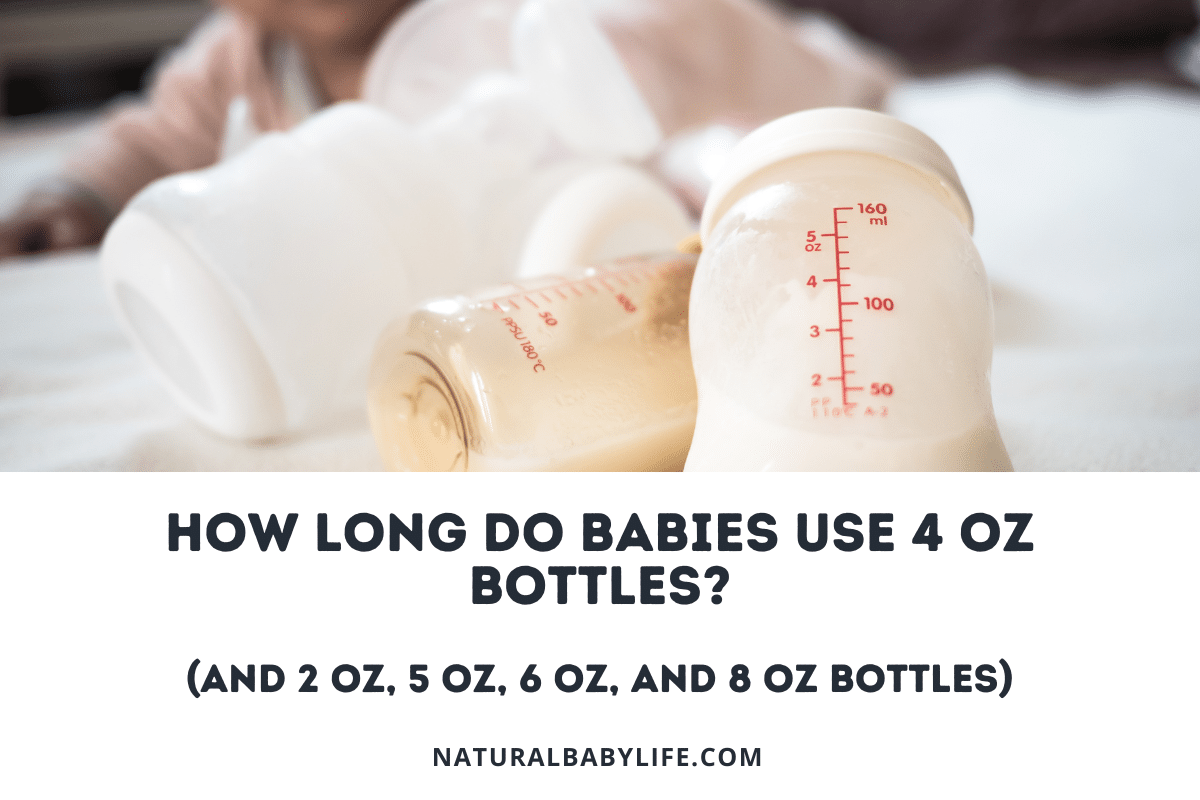As your baby grows, he will get used to bottle feeding and will feed faster and more efficiently. One of the most confusing things is when you have a baby who fights the bottle when they’re still hungry.
Fighting with the bottle is a common phase that usually goes away on its own. Unless your baby isn’t gaining weight or is in pain, no action is needed. But I have some tips to ease this stage.
Read along as we discuss the common reasons why your baby fights with the bottle and what you can do to break this habit.
Table of Contents
Baby fights bottle but hungry? Most common reasons
You and your baby finally have a working routine for bottle feeding. Then all of a sudden, your baby who used to be a great bottle feeder is fighting with the bottle or completely stops feeding.
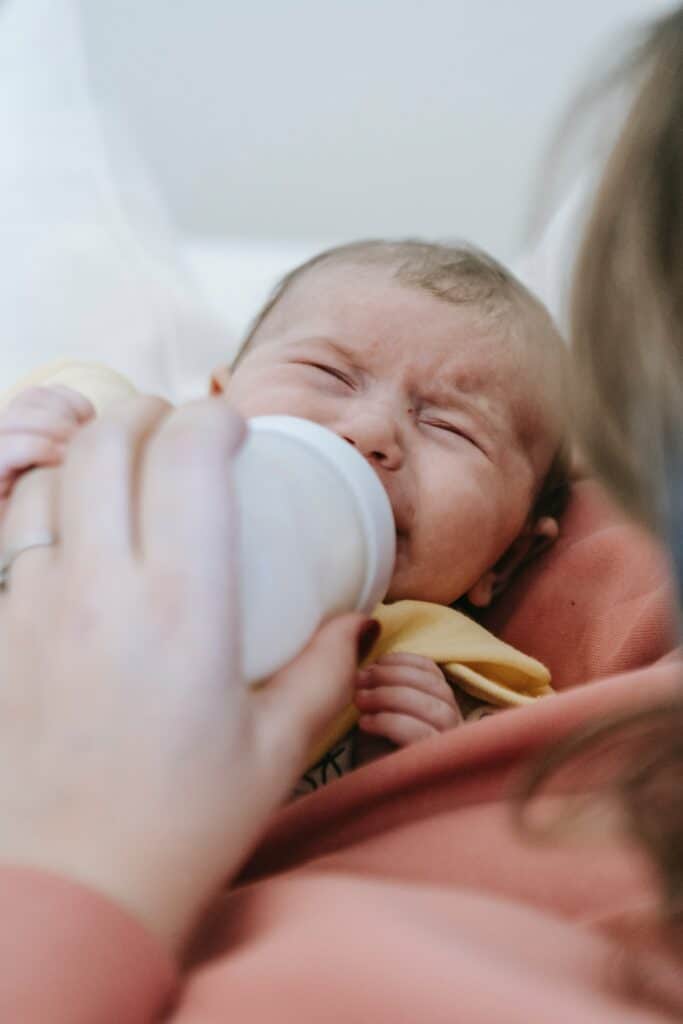
This is a frustrating experience, but you are not alone in this situation and it happens more often than you think. Up to 25% of parents experience feeding-related problems with their children at some point in their development.
Here are some of the common reasons why your baby is fighting with the bottle:
- Still consuming breast milk
- Still nursing and breastfeeding
- Slowly weaning from the breast
- Starting to eat solid foods
- Formula intolerance or allergy
- Cow’s milk intolerance or allergy
- Issues with swallowing
- Changing appetite
- Transitioning from bottle to sippy cup
- Going through a developmental stage
- Pediatrician recommendations
- Possible tongue-tie
- Aversion to feeding
- Acid reflux
- Diarrhea and upset stomach
- The bottle’s shape and size
- The bottle’s nipple shape and size can affect nipple flow
Still consuming breast milk
Your breast milk changes over time. There will be instances when your baby will not like the taste of breast milk because it might taste soapy and have a strong scent.
If your baby is fighting the bottle because of the taste change in your breastmilk, you might want to do an elimination diet. This can also help if your baby is experiencing breast milk sensitivities.
The changes in your breast milk are due to an enzyme called lipase that naturally breaks down the fat in the breastmilk.
It can also be attributed to a change in your diet, which might give off a strong taste or flavor in your milk that your baby doesn’t like.
Still nursing and breastfeeding
Your baby will fight the bottle when he prefers to nurse and breastfeed, especially if he is sick or teething.
If he fights with the bottle during this time and you are still nursing, you can let him breastfeed because it is just a phase that will go away eventually.
Nursing will still be the number one thing that your baby seeks when he is not feeling well because it brings a sense of comfort to him.
Another reason why your baby is fighting the bottle is nipple confusion which older babies can also go through. Nipple confusion happens even if you have an established breastfeeding and bottle feeding routine.
Slowly weaning from the breast
There are chances that your baby will fight with the bottle even if he is hungry when you are undergoing life changes that can affect your feeding relationship.
Life changes like slowly weaning from the breast because you have to go back to work can be one of the reasons why your baby is fighting the bottle. To help your baby with this transition, you can gradually wean over a few days or a week.
If you are slowly weaning from breastfeeding and introducing more bottles to your baby, your baby will notice this and will sometimes go on a hunger strike because he understands what is happening.
Changes are hard on everyone and this includes your baby who thrives on routine.
Starting to eat solid foods
Your baby will fight the bottle even if he is hungry when you start introducing solid food because some babies prefer solid foods over the bottle.
Despite this preference, it is still important that your baby gets breast milk or formula to help with his growth and development. To help with this, you can offer the bottle first during mealtimes and then solid foods after the bottle.
The AAP recommends that no solid foods should be introduced to the baby within the first 6 months of life and babies should only feed on breast milk or formula.
After your baby has hit the six-month mark, you can start introducing solid foods slowly but still feeding your baby breast milk or formula during this time so that he can get the nutrients needed to grow.
Formula intolerance or allergy
Another reason why your baby is fighting the bottle but still hungry can be attributed to formula allergy.
It is best to talk to your doctor if you suspect that your baby is allergic to formula just to make sure that there are no underlying reasons. Once the allergy has been determined, you can switch to a gentler and hypoallergenic formula.
A formula allergy will lead to the following symptoms:
- excessive crying
- discomfort during or after feeding
- extreme gassiness
- colicky behavior
- loose stools
- frequent spitting up
It is important to know that not all formula intolerance points to gastrointestinal issues.
Your baby can also show the following symptoms that indicate an allergy to the formula:
- hives
- eczema
- nasal stuffiness
- cough
- rash
If your baby is having a severe allergic reaction and is having trouble breathing or turning blue, it is important to call 911 right away to get medical help.
Cow’s milk intolerance or allergy
When your baby fights the bottle but is still hungry, he might have an intolerance or allergy related to cow’s milk which is very common under the age of one.
If you suspect that your baby is allergic to cow’s milk, it is best to consult your doctor. If the allergy has been confirmed, you have to eliminate all cow’s milk from your baby’s diet and your diet if you are breastfeeding.
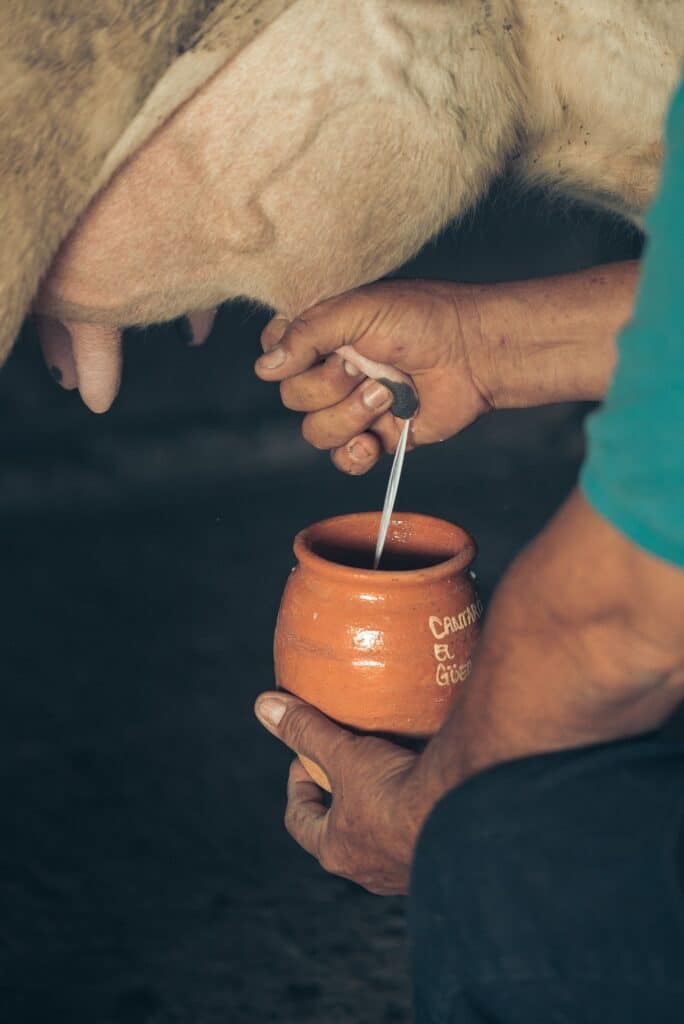
Once your baby turns 1, it is recommended that you start introducing cow’s milk to his diet in place of formula. It is estimated that it affects 7% of babies under 1, but most will outgrow it by the age of 5.
Your baby’s allergic reaction to cow’s milk can either be immediate with symptoms manifesting within minutes or delayed where the symptoms can take hours or several days to show up.
Like any food allergy, cow’s milk allergy can result in skin reactions, problems with digesting milk, skin rashes, and hay fever-like symptoms.
If your baby is having an extreme reaction to cow’s milk and results in difficulty in breathing – you should call 911 right away.
Once it has been confirmed that your baby is allergic to cow’s milk, your doctor might recommend a special infant formula.
There are also non-dairy milk options that you can try, but make sure that you are clearing this with your doctor first to make sure that it’s okay to give to your baby.
Issues with swallowing
When your baby is fighting with the bottle but is still hungry, he might have issues swallowing or have a condition called dysphagia.
This condition happens when there is difficulty swallowing food or liquids in children. Dysphagia requires a medical diagnosis and it is best to contact your doctor if you think your baby is having this issue.
Premature birth, dental problems, and GERD put babies at an increased risk of dysphagia.
The symptoms of this condition can vary and can include coughing and choking after drinking or eating, gagging during eating, and arching or stiffening during feeding. The treatment for this condition will vary depending on the severity.
Changing appetite
Changing appetite can also be a culprit for your baby fighting the bottle even if he is still hungry.
If your baby’s appetite has increased, he might be frustrated with the bottle because he wants more food. On the other hand, fighting with the bottle can also mean that his appetite has decreased and he doesn’t want to eat.
This is a completely normal phase that all babies go through. If you are concerned about poor weight gain, you can contact your doctor for advice.
A growth spurt will usually lead to an increase in the baby’s appetite and will make your baby hungrier than normal. This will sometimes lead to frustration with the bottle and make your baby fight it.
The same thing happens when your baby has no appetite or is not in the mood to eat.
Transitioning from bottle to sippy cup
At 18 months, it is recommended that babies transition from the bottle to the sippy cup.
Because of this transition and change, some babies fight with their bottle because they are resisting the change and prefer the sippy cup especially if you are doing it gradually.
If your baby is doing this, you can go cold turkey and you can help your baby get used to the sippy cup.
The AAP recommends transitioning from a bottle to a sippy cup by 18 months for the sake of your baby’s dental health.
Drinking milk in a bottle will expose your baby to prolonged contact with sugars in the milk and can lead to tooth decay. Having your baby drink from the bottle beyond 18 months will also affect his oral motor development.
Going through a developmental stage
Your baby will fight the bottle even if he is still hungry when he is going through a developmental stage.
These developmental stages make your baby more mobile because they are eager to practice their new skill which leads to disinterest in sitting down and eating.
To help your baby with this transition, you have to stick with the feeding routine even if he is not interested in eating.
There are different developmental stages that your baby goes through within the first two years of life. These changes are exciting but can lead to a distractible baby especially when you are trying to sit him down to eat.
This includes learning to crawl or walk, even though he may not be doing either while trying to eat.
These phases are temporary and will go away before you know it but you still have to try to feed your baby. The best way that you can do this is to have an established routine for feeding.
Babies thrive on routine and this ensures that your baby will still have a chance to get nutrients even when he is not interested in sitting down and eating.
The bottle’s shape and size
The bottle’s shape and size are common reasons why a baby all of a sudden is fighting with the bottle.
Before you spend money experimenting with different bottle shapes and sizes, you can try to give it a week to see if your baby will eventually take the bottles that you have.
Another thing that you can try is experimenting with different temperatures of formula or breastmilk – because sometimes if it’s too cold or hot, your baby will not take the bottle regardless of what size or shape the bottle is.
Nipple shape, size, and flow
Sometimes the bottler’s nipple shape and size are the main reasons why your baby is fighting with the bottle even if they are still hungry.
Instead of switching the bottles completely, try experimenting with different nipples sizes and flow. Some babies prefer faster flow nipples while other babies want slow flow.
Once you find the right nipple shape and size, you can stick to it but keep in mind that as your baby grows, his needs will change so the flow types of nipples will also change.
Pediatrician recommendations
Your pediatrician is the best person that you can come to for resources to help your baby if he is fighting with the bottle and doesn’t seem to be getting enough nutrients which can affect his weight gain.
If your baby is fighting the bottle and the phase doesn’t seem to go away – there might be an underlying issue.
There are numerous reasons why your baby will fight the bottle even if he still seems hungry. Usually, this is a phase unless there is an underlying medical issue that is making your baby frustrated with the bottle.
Possible tongue-tie
If your baby is fighting with the bottle but is still hungry, he may have a tongue-tie.
A tongue tie occurs when the baby’s frenulum or the strip of tissue connecting the tongue to the floor of the mouth is shorter than usual.
This condition typically goes away on its own and will recede in the first year of life. You can try feeding your baby from a cup if he is having issues feeding with the bottle.
Tongue-tie is pretty common and can affect between 4 to 11 percent of babies. It can be present at birth and can be hereditary.
There is a small population of tongue-tie babies that need a small surgical procedure called frenotomy which is a safe procedure.

Aversion to feeding
Feeding aversion can also happen to your baby which is a reason why he is refusing the bottle.
This is a pretty common occurrence even with babies who are fully capable of feeding. There are many reasons why your baby can have feeding aversion including stress, pain, or fright.
To help your baby with this phase, you can try making changes to his diet or feeding him high-calorie foods and solids.
You can tell when your baby is undergoing feeding aversion because he will usually skip meals, fuss, and cry when you try to feed him and consume less milk than usual.
Food aversion is easier to counter because you can try other types of food to your baby’s liking. If you are concerned about your baby’s weight because of aversion, you can contact your doctor for further advice.
Acid reflux
Acid reflux can also be a reason why your baby is fighting the bottle even if he is still hungry.
Reflux is caused by an underdeveloped esophageal sphincter and happens when the milk goes back out of the belly, up the pipe, and out of the baby’s mouth.
If your baby is suffering from acid reflux, you can feed him small amounts at more frequent times and make sure to burp him after each feeding.
Acid reflux can happen up to 18 months of age. It doesn’t hurt but it can surely make your baby uncomfortable and make you do double loads of laundry from the spit-up.
To help your baby with acid reflux, you can sit him up for at least 20 minutes after each feeding to make sure that the food has time to settle and digest.
Avoid playing and lots of movements after your baby feeds to avoid spitting up. You can also try switching the baby’s position while feeding and making sure that his head is above his body instead of completely lying down.
Diarrhea and upset stomach
Having diarrhea and an upset stomach can make your baby fight with the bottle even if he is hungry.
He will have no appetite since his tummy is not feeling well. An upset tummy is usually caused by gas, constipation, and any food allergies or sensitivity.
You can help your baby by either going through an elimination diet or considering switching formulas if the upset stomach doesn’t go away.
Your baby might seem uncomfortable but here are some techniques that can help alleviate the pain:
- Do bicycle movements with his legs.
- Take a look at what they’re eating and possibly go through an elimination diet.
- If you are breastfeeding, take a look at what you are eating and possibly go through an elimination diet.
- Consider switching formulas.
- Keep baby upright after every feeding.
Conclusion
Babies can be discerning little eaters, so there are a number of factors that might make them fight the bottle. You can freely try different solutions, but check with your pediatrian if it seems your baby isn’t getting enough formula or breast milk.

